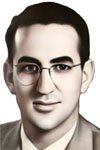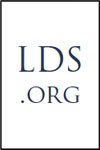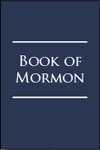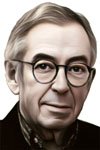If the Book of Mormon is a genuine historical record of a real people, language, culture and places, then we would expect to find tangible evidences to support it. However, if it is a product of Joseph Smith’s imagination, then no such evidence exists.
Archaeological Record
An examination of Book of Mormon claims with the archaeological record.
| Book of Mormon | Archaeology | ||||||||
|---|---|---|---|---|---|---|---|---|---|
|
People Jews are the principle ancestors of the indigenous inhabitants: Jaredites, Mulekites, Nephites and Lamanites. |
Since the first edition of this handbook, the LDS church has conceded that DNA evidence does not support the Book of Mormon narrative that Jews are the primary ancestors of American Indians. 

|
||||||||
|
Geography
Hill Cumorah, Manchester, New York Despite claiming to be led by continuous revelation, The Church of Jesus Christ of Latter-day Saints provides no answers, except for the Hill Cumorah, as to where the events in the Book of Mormon took place. |
Because of this vacuum, Mormon apologists and church members are left to speculate. Theories range from the Great Lakes region, New York, North America, Central America / Mesoamerica, South America, Costa Rica, Sri Lanka and Malaysia | ||||||||
|
Language
Reformed Egyptian and possibly Hebrew. |
The Book of Mormon suddenly appears with no other extant copies, fragments, quotations, citations, inscriptions, engravings, parchments, scrolls, manuscripts, books, plates, etc. found. Egyptian and Hebrew have never been found in the ancient New World. 
| ||||||||
|
Agriculture
Figs Wheat Silk |
Native to Asia. Brought to the Americas by the Spaniards in the 1500’s. Native to Iraq. Brought to the Americas by the English colonists in the 1700’s. The process of refining silk from silkworm cocoons originated in China. This process was introduced by New World colonists over a millennium after the Book of Mormon ends. | ||||||||
|
Animals
Ass
Cattle, Oxen Elephants Goats Horses Sheep Swine |
Donkeys are native to North Africa. Brought by the Spaniards in the 1500’s. First domesticated in the Middle East. Brought by colonists in the late 1400’s and early 1500’s. Native to Africa and Asia. The first elephant was brought to North America for a traveling exhibit in 1796. Native to Asia. Brought to the New World by colonists in the 1500’s. Horses in North America were extinct by the time the Book of Mormon began. Spanish conquistadors reintroduced them to the continent in the 1400’s. Native to Southwest Asia. Brought to America in 1492 by Christopher Columbus. Native to Eurasia and North Africa. Brought to the New World by the Spaniards in the 1500’s. | ||||||||
|
Coinage
Alma 11:5-19 |
No pre-Columbian coins have ever been found in the New World. | ||||||||
|
Industry
Chariots Compass |
There is no evidence that ancient cultures of the New World used wheeled vehicles. There also were no horses on the continent to push them. The compass was invented in China in 1100 AD, long after the Book of Mormon ended. | ||||||||
|
Metallurgy
Steel, smelting and dross |
There is no evidence of high-temperature smelting in the ancient New World. The Book of Mormon narrative also mentions ‘dross’, which is a smelting waste product. | ||||||||
|
Weaponry
Steel swords Cimeters, scimitars |
There is no evidence of high-temperature smelting in the ancient New World to produce steel. A 15th century word for the curved, single-edged sword of Oriental origins. Out of place for 400 BC American Indians. | ||||||||
New World Archaeological Foundation (NWAF)
The NWAF is part of Brigham Young University. It was founded by *Thomas Ferguson and financed by the LDS church to conduct archaeological research for the Book of Mormon. After 17-years of fruitless research, Thomas Ferguson lost his testimony.

You can't set Book of Mormon geography down anywhere -- because it is fictional and will never meet the requirements of the dirt-archaeology. I should say -- what is in the ground will never conform to what is in the book. | |
 | — Thomas Ferguson
Founder and President of the New World Archaeological Foundation
|
- See more on Thomas Ferguson
Smithsonian Institution

The Smithsonian Institution has never used the Book of Mormon in any way as a scientific guide. Smithsonian archaeologists see no direct connection between the archaeology of the New World and the subject matter of the book. | |
 | — Smithsonian Institution
Department of Anthropology
|
National Geographic

Smith's narration is not generally taken as a scientific source for the history of the Americas. Archaeologists and other scholars have long probed the hemisphere's past, and the Society does not know of anything found so far that has substantiated the Book of Mormon. | |
 | — National Geographic
|
Conclusion
The Book of Mormon is an unverifiable translation of an unknown language from an unknown people living in an unknown land.









